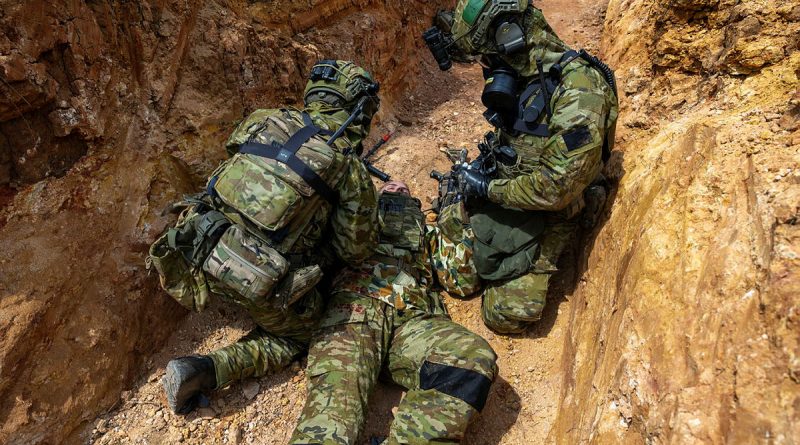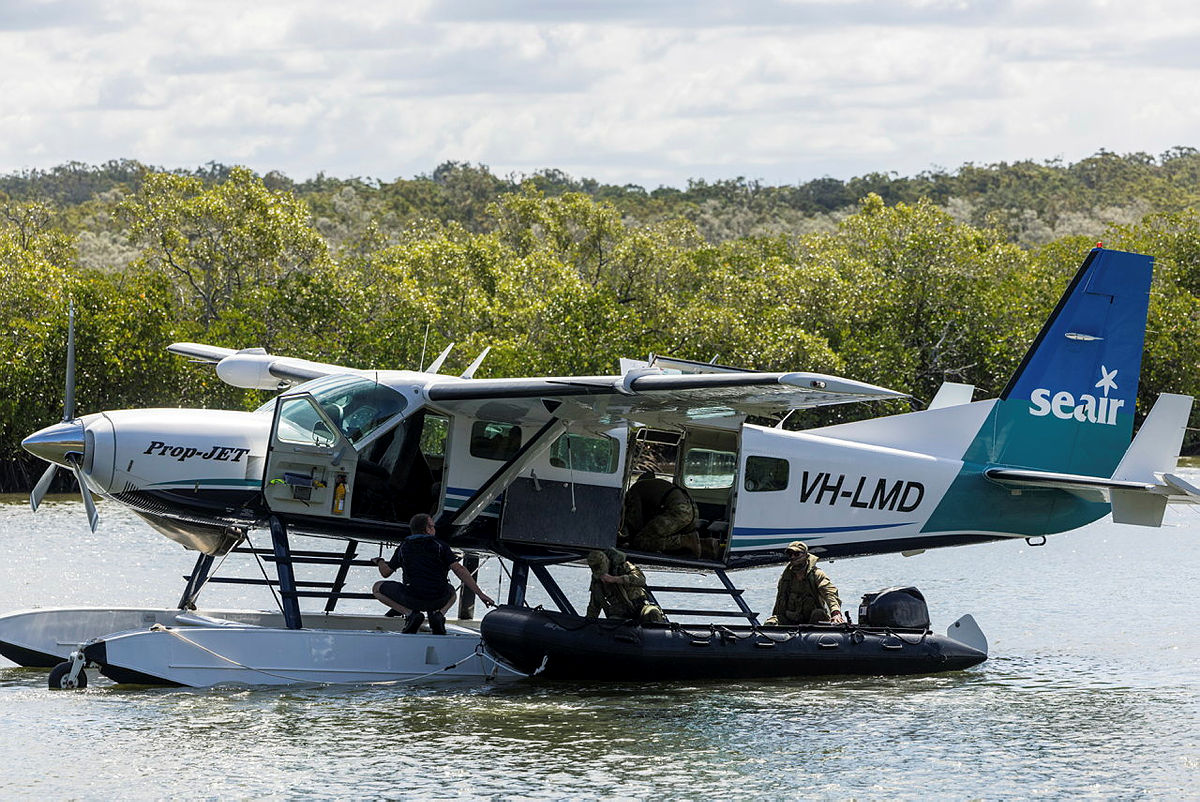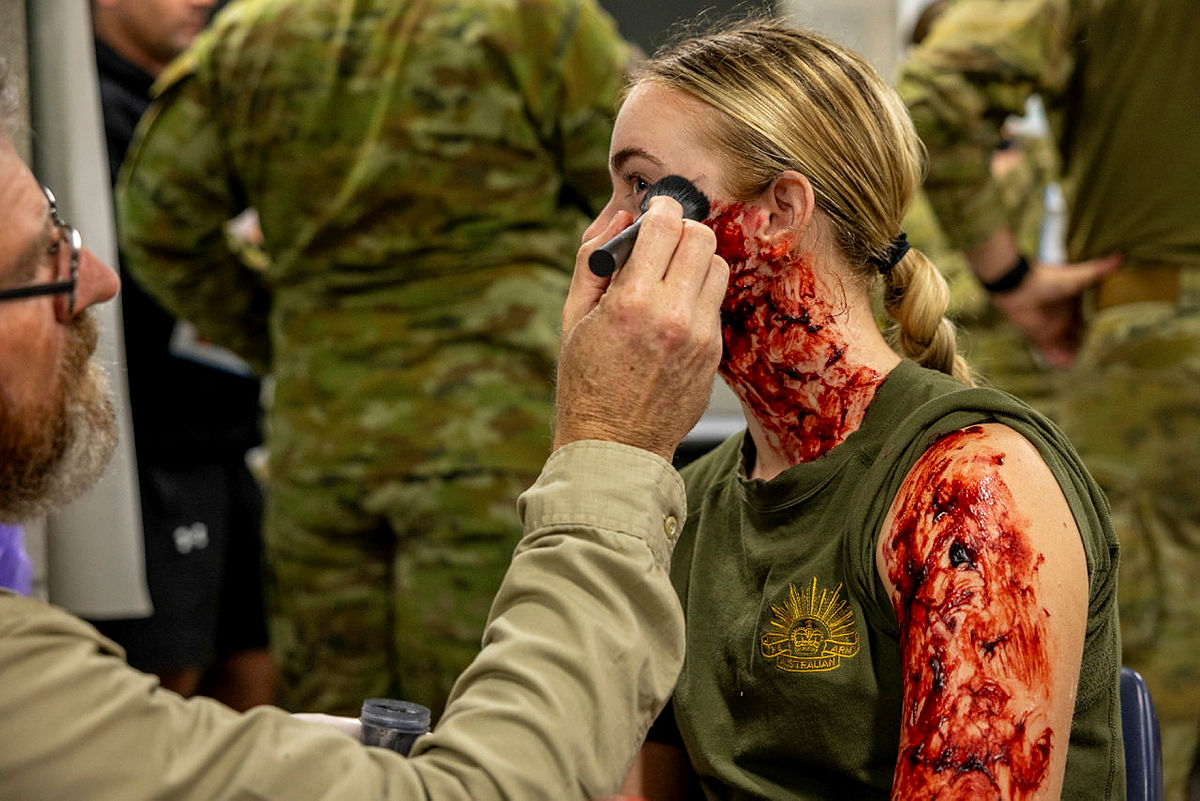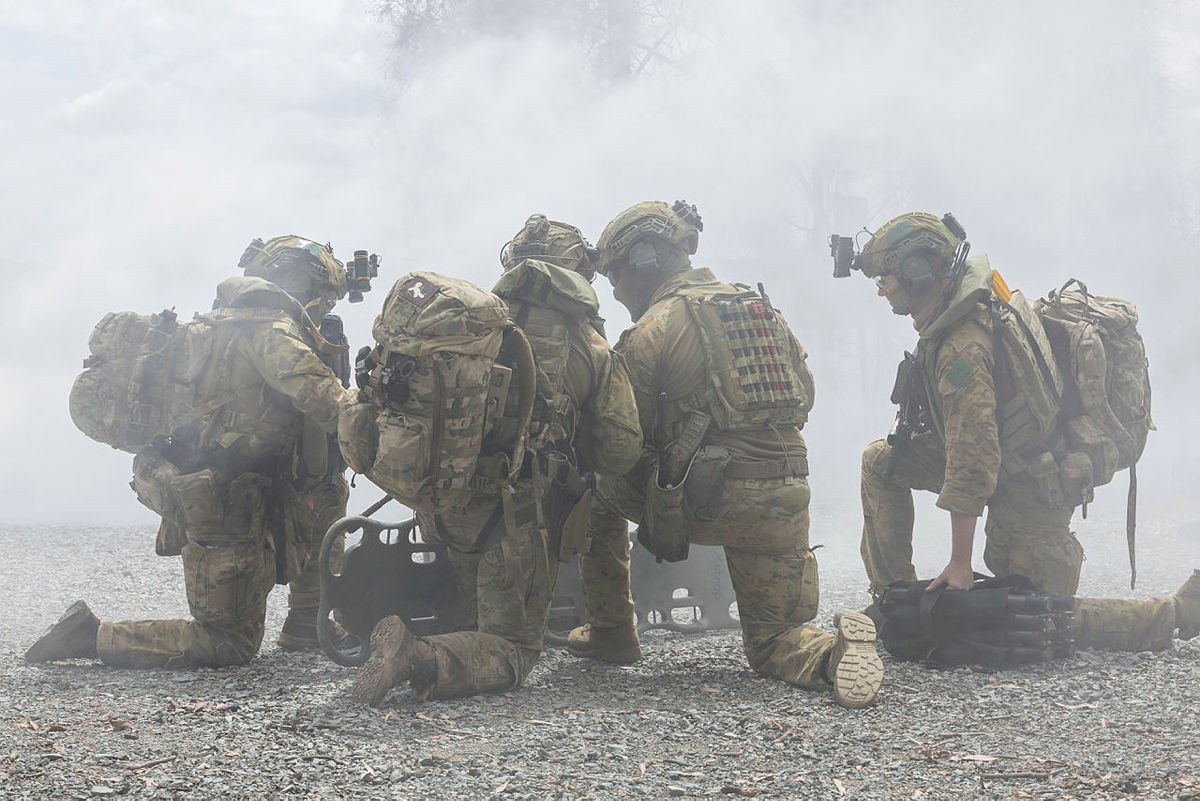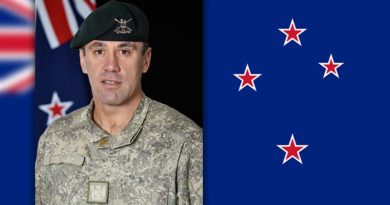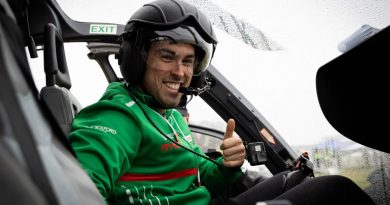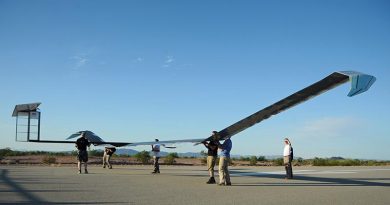Ultimate pressure test for Army medics

Screams for help echoed across an open river, sheer desperation in the voice apparent.
CAPTION: Army medics treat a simulated casualty during a trench warfare CBRN scenario as part of Exercise Rendezvous Acacia at the Wide Bay Training area, Queensland. Story by Captain Nicholas Marquis. Photos by Leading Seaman Nadav Harel.
A lifeless body floated in the water, being pulled downstream with the current.
As medics from Army’s 2nd Health Brigade patrolled down an embankment, the scene for the scenario became clear.
Imitating a downed aircraft, the screams were from a role player and the lifeless body was a manikin.
This was only one scenario across a week in September when Exercise Rendezvous Acacia was held at Wide Bay Training Area.
CAPTION: A local seaplane is used to airlift a simulated casualty during a mass casualty scenario.
Using non-standard and opportunistic evacuation platforms was at the forefront of the inaugural exercise.
Health coaches and subject matter experts followed medics through meticulous scenarios, which enabled them to take new skills back to their home units.
Scenarios included a CBRN (chemical, biological, radiological and nuclear) casualty in trench warfare, opportune platform evacuation, prolonged casualty care and the evacuation of patients using Zodiacs and a seaplane.
Exercise director Sergeant Joshua Bowman, of 4th Health Battalion, said it was 16 months in the planning, inspired by an international engagement.
CAPTION: Injury moulage is applied to a simulated casualty before a mass casualty scenario.
“I got to witness some incredible training overseas and it had me thinking that we could do the same in Australia,” Sergeant Bowman said.
“The seaplane insertion was an opportunity to demonstrate to not only 2nd Health Brigade, but the wider Army, that we have the capacity to evacuate using these resources.
“Health is often a supporting asset for capabilities to achieve their training outcomes, but this activity was all about training health.
“This exercise has given us an opportunity to challenge ourselves, identify shortfalls and re-orientate onto what the future requirements of health may be.”
During the CBRN scenario, medics were treating a casualty when they suddenly had to don protective gear and avoid indirect fire.
Lance Corporal Sarah Franklin said it was only once she had calmed down after that scenario that she realised how much she was sweating and how much her body was hurting.
The medical technician from 3rd Health Battalion said being put into challenging scenarios was great to see how they all worked under pressure.
“We did a scenario where we had an asthma patient and one who experienced a blast injury with a K9 manikin and had to treat them in the back of a blacked out van,” Lance Corporal Franklin said.
“It doesn’t feel like the usual training I’ve done previously and it can feel a bit uncomfortable at times, but it puts you in the mental space as if it was a real casualty.”
Usually working in the ICU of the Role 2 Basic, Lance Corporal Franklin said being able to put her tactical skills to work was beneficial to the training.
“There is so much that we will all get from this training and it will really develop the role of medics,” she said.
“I think it gives something for medics to work towards and will really reinforce training and culture into the units.
“It was a great opportunity, and people will strive to be able to come on this exercise, because it has been really cool.”
CAPTION: Australian Army medics are briefed during a mass casualty scenario as part of Ex Rendezvous Acacia at the Wide Bay Training area, Queensland.
A coach on the exercise, Sergeant Rae Young, of 2nd Health Battalion, was there to mentor and help make the training realistic.
“This week has been amazing – a real eye opener for me,” Sergeant Young said.
“To be able to put the realism into the scenarios has set a great standard and it ties into the current threats that we have going on around the world.”
She said using non-standard and opportunistic evacuation platforms meant there was now a continuation of care, rather than the standard point-of-injury care.
Paired with a subject matter expert, Sergeant Young said training with like-minded people was helping the workforce.
.
.

.
.

